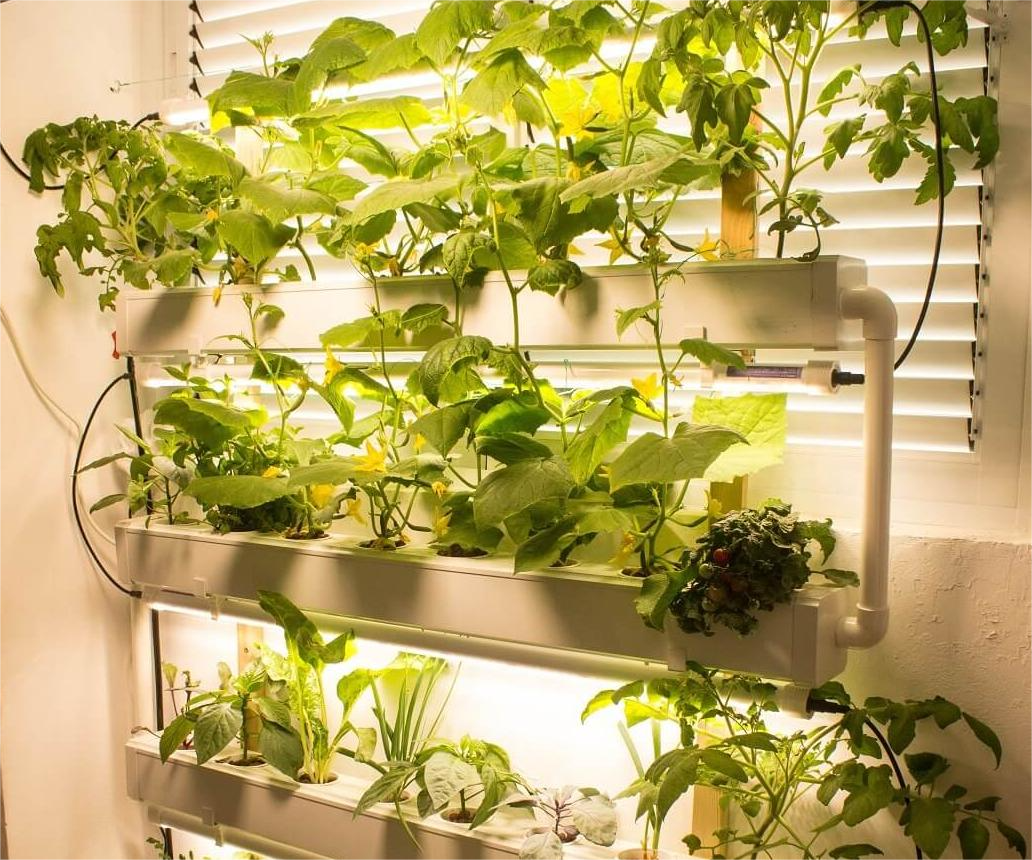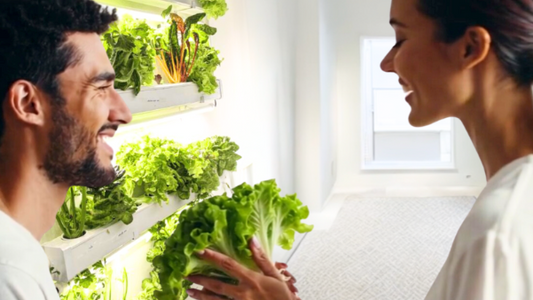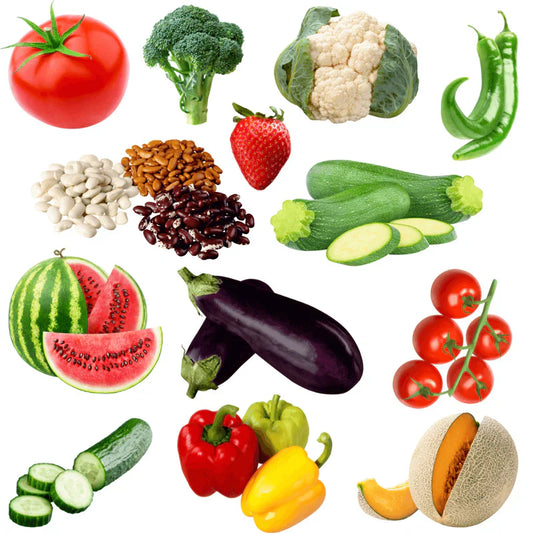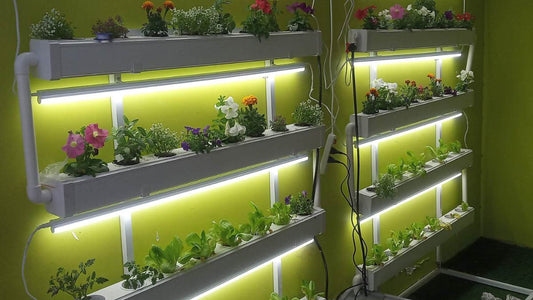It is exciting to get into gardening for the first time, whether using the traditional soil method or diving into the world of hydroponics.
But before you start planting, there's one thing you need to consider: the economic cost of becoming a gardener.
Both methods involve expenses related to equipment, seeds, and fertilizers, among other essential elements for starting a garden.
In this article, we'll compare the costs of each method, from the initial setup to ongoing maintenance, so you can make an informed decision about which one is better for you.
Ready to dig in? Let’s examine the numbers and compare the costs of hydroponics vs traditional gardening.

Your Initial Investment
If you’re ready to start your garden, remember that the initial investment can vary widely depending on your chosen method.
Traditional gardening typically involves purchasing soil, seeds or seedlings, pots, gardening tools, fertilizers, or pesticides.
On the other hand, hydroponic gardening requires a different set of equipment. Instead of soil, you'll need a hydroponic system, including items such as a water reservoir, nutrient solution, a growing medium, and lighting.
Let's delve deeper into these initial expenses and see how they compare.
Costs of a Traditional Gardening System
Here's a breakdown of some essential products if you’re considering traditional gardening:
Soil
Depending on the size of your garden area, you may need several bags of soil to start planting.
A 5-litre bag of organic topsoil costs around $20 to $30 CAD ($15 to $22 USD).
You’ll need to buy approximately one bag of soil for every square foot of garden space, so for 100 square feet, you should acquire ten bags of soil.
Seeds or Seedlings
The cost of seeds or seedlings varies depending on the type of plants you want to grow, but they are typically inexpensive.
A packet of 20 different vegetable seeds can range from $15 to $20 CAD ($11 to $15 USD), while seedlings can cost anywhere from $5 to $10 CAD ($3 to $7 USD).
Gardening Tools
Basic tools such as a trowel, shovel, rake, and watering can are essential for traditional gardening. A starter set of these tools can cost between $45 and $60 CAD ($30 to $44 USD).
Investing in quality tools will save you time in maintenance and improve your gardening experience, so don't overlook the cost of good tools.
Pots or Planters
If you opt for container gardening, investing in pots or planters is essential for providing adequate space and support for your plants.
Prices vary depending on size and material, but a pack of 5 decent-sized plastic pots can cost around $15 to $20 CAD ($11 to $15 USD).
Fertilizers and Amendments
Depending on the soil quality and the type of plants you choose, you may have to invest in fertilizers or soil amendments, which cost around $15 to $20 CAD ($11 to $15 USD).
Overall, a modest traditional gardening setup will initially cost between $400 and $600 CAD ($290 and $440 USD).
The Cost of Starting Your Hydroponic Gardening System
Hydroponic gardening is more straightforward (it doesn’t depend on soil quality for cultivation) but requires specialized equipment for your plants to grow strong. The good news is that you buy it once and reuse it for years. Let’s see how much it’ll cost in the beginning.

Here’s what you would need to get started with hydroponics:
A Hydroponic System
Typically ranging in price from $500 to $800 CAD ($360 to $587 USD), these hydroponic systems vary depending on your available space and objectives.
Let’s have a look at some of the options:
Garden Towers
Garden towers are vertical structures with growing pockets or trays where plants are cultivated without soil.
They rely on a nutrient-rich water solution instead. These walls maximize space efficiency and provide an aesthetic way to grow various plants indoors.
Nature Tech, for example, offers a beautiful Airponic Fruit—Hydroponic Tower Garden System, which costs $775 CAD ($465 USD) and can grow up to 40 plants.
Made of BPA-free, food-grade plastic, it’s weather-resistant and healthy for plant growth.
Hope Innovations designed a similar growing tower currently on the market, sold for $997 CAD ($730 USD). It includes high-performance 5000k LED floodlights on each level. Growing lights are the most expensive part of starting hydroponics.

Wall Gardens
Wall Gardens are also vertical systems, but instead of staking trays, they use your surfaces, like walls or fences, to support the growth of plants on pockets or modules.
The cost of wall garden systems is similar to that of garden towers. Wally 32 by Nature Tech, for example, is sold for $645 CAD ($475 USD), making the most of the space you have indoors.
With Wally 32, you can grow large fruits and vegetables such as eggplant, peppers, cucumbers, zucchini, and watermelon.

Its features include maintaining a minimum water level, which protects your plants against power outages while being super easy to assemble, install, and operate.
Other brands like SanSanYa also manufacture wall garden systems for $75-90 CAD ($55-$66 USD), but these systems don’t include a reservoir tank and have only 10-20 cups for growing plants.
Dutch Bucket Systems
A Dutch bucket system is a hydroponic setup where individual buckets are connected to a central nutrient reservoir using irrigation lines or tubing.
This method allows for precise control over nutrient delivery to each plant, promoting optimal growth.
Using a Dutch bucket system like Tobato 5 by Nature Tech, you can grow up to five large fruit and vegetable plants indoors or outdoors.
Tobato 5 includes a compensation float connected to a water source to fill the reservoir when the levels drop automatically.
It’s easy and quick to assemble with household tools and simple to maintain. This type of system is sold for $675 CAD ($495 USD).
Other brands like Wyddary or Ygood also offer similar systems, priced at around $410 to $475 CAD ($300 to 350 USD), as they are significantly smaller and made of PVC instead of BPA-free, food-grade polypropylene.

Lighting
Hydroponics depend mainly on the natural light available in your space for plant growth.
This means you must strategically position your hydroponic systems near windows, skylights, or other natural light sources to ensure your plants receive sufficient illumination throughout the day.
However, not having enough access to natural light does not mean you cannot choose hydroponics.
This lack of light indoors can be solved by investing in additional grow lights, which, on average, cost $900 to $1200 CAD ($600 to $880 USD).

Maintenance Supplies
While hydroponic systems require less soil and water than traditional gardening, you'll still have to buy nutrient solutions, which cost $15 to $20 CAD ($11 to $15 USD).
Occasionally, you may need to buy growth substrate for $50 to $75 CAD ($36 to $55 USD) to see your plants grow.
Adding up these estimates, the initial cost for starting with hydroponics would be around $900 to $1995 CAD ($660 to $1400 USD).
Hydroponics vs. Traditional Gardening: Which One Is More Expensive?
As you can see, starting with hydroponics has higher costs than starting with traditional gardening, especially regarding equipment.
You’d spend at least $900 CAD ($660 USD) instead of $400 CAD ($290 USD) on traditional gardening.
But let’s not forget that, in the long term, hydroponic systems are more cost-effective.
This means they are a one-time investment and can be reused, lasting long, regardless of the temperature outdoors. Plus, you’d need to think about long-term costs, too.
Factoring in Long-Term Costs
Let’s consider traditional gardening. While initially less expensive in equipment and setup, it often has ongoing costs for maintenance and replenishment of supplies.
This includes expenses such as irrigation water, fertilizers, pesticides, and soil amendments. Over time, these recurring costs can accumulate and become very expensive.
Hydroponic gardening, in contrast, tends to have lower long-term costs. It doesn’t rely on soil but on efficient water use, so it typically requires less water and fewer fertilizers than traditional gardening.
Also, you won’t spend as much on pest and disease control.
Ready to Make a Decision?
While traditional gardening may have lower initial costs, hydroponics can offer potential savings in the long run.
Reduced water usage, fewer inputs, and more efficient resource utilization (and let’s not talk about space!) are only some of its advantages.
Additionally, the controlled environment of hydroponic systems often leads to higher yields and faster growth rates than traditional gardening, meaning you’ll get a quicker return on your investment in time and resources.
Ready to experience the benefits of hydroponics for yourself? Browse through our hydroponic kits, contact us if you have any doubts, and start a thriving indoor garden today!
Download the free guide, 10 Easy Steps to Grow Hydroponic Lettuce in 30 Days, and start growing leafy greens for salads at home.




